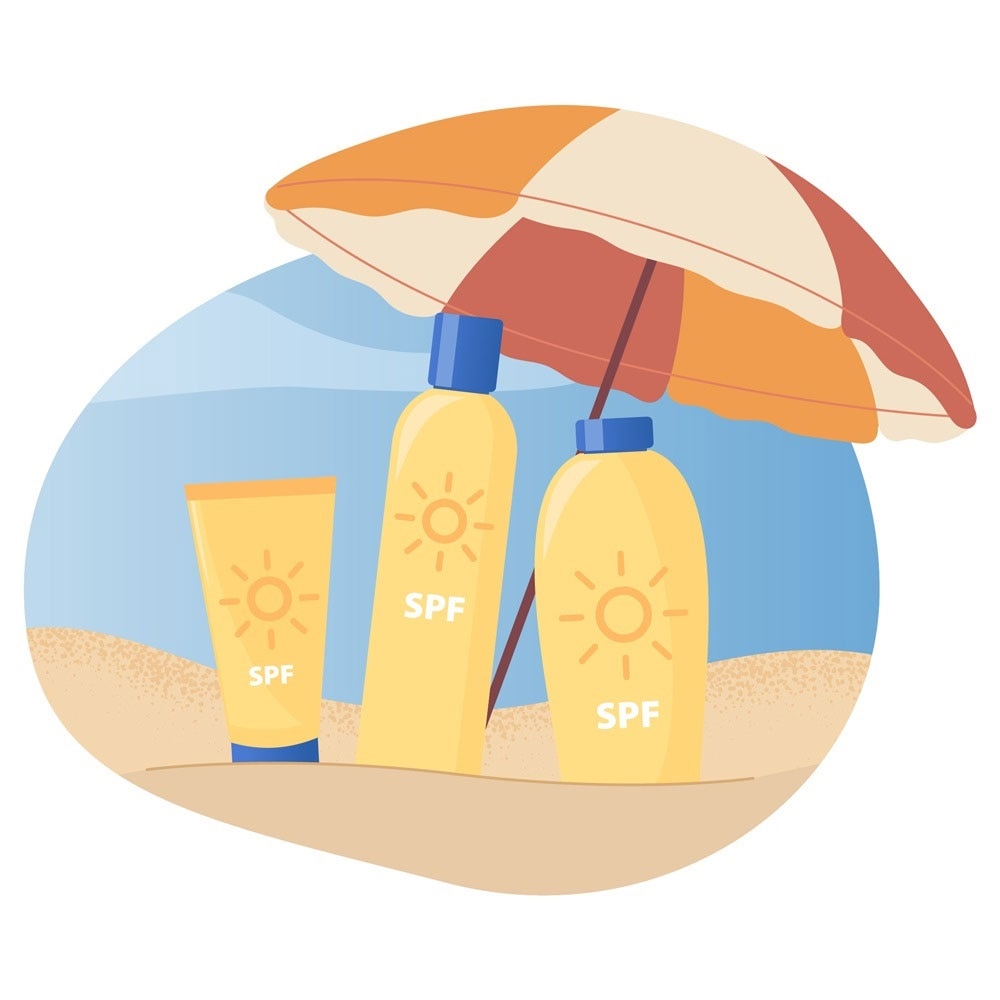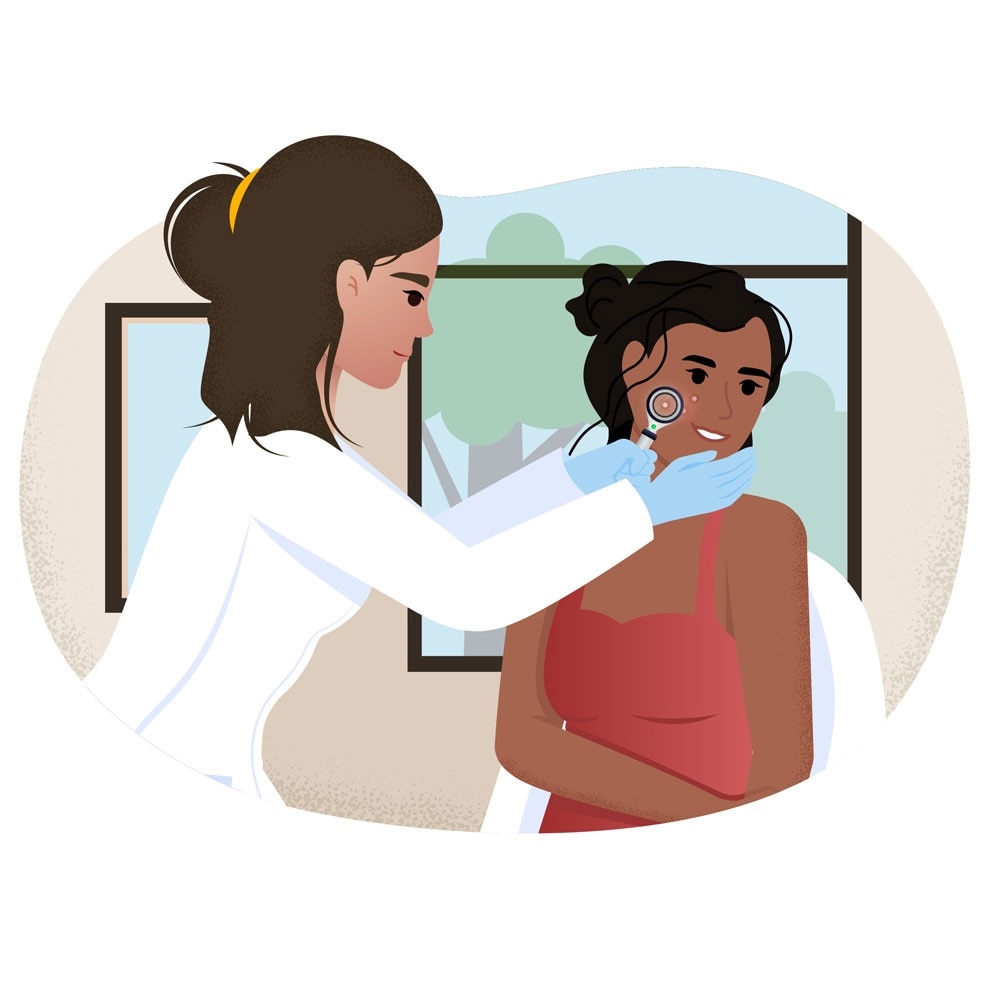
You likely know that too much sun is bad for the skin, but how much sun is too much? UV rays from the sun can damage the skin in as little as 10 minutes, even less if you’re very fair-skinned.1 This isn’t just limited to hot and sunny days; UV rays are present in any weather condition, including cold and cloudy days and every day in between.1 As a matter of fact, up to 80% of the sun’s UV radiation reaches the Earth even on cloudy days.2 This makes sun protection important all year round.
Keep reading for sun safety tips to help protect your skin from the sun and reduce your chances of developing skin cancer and other sun damage.
1. Protect Your Skin When You Head Outside

If you’re spending time outdoors, regardless of the time of year or weather conditions, it’s advisable to wear sunscreen. The sun is emitting damaging UV rays even when it's barely noticeable, and these rays penetrate clouds and bounce off water, sand and snow.3
Wearing sunscreen year-round not only reduces the likelihood of developing skin cancer but also helps prevent sunburn and early signs of aging, like wrinkles and sun spots.2
2. Understand Your Sunscreen Options

It may seem like a no-brainer: Pick a sunscreen — any sunscreen — and put it on. But there's more to it than that. When choosing a sunscreen, it’s important to consider several factors, no matter what time of year you wear it:
- Ultraviolet A (UVA) vs. ultraviolet B (UVB) rays. The sun emits UVA and UVB rays. While both types can contribute to skin cancer, UVB rays are more responsible for sunburns, while UVA rays can cause tanning and premature aging.2 A sunscreen that’s labeled “broad spectrum” protects skin from both UVA and UVB rays.4
- Sun protection factor, or SPF. This rates how effectively sunscreen prevents sunburn.2 The American Academy of Dermatology (AAD) recommends using sunscreen with an SPF of at least 30.4
- Sunscreen ingredients. When it comes to sun protection, any sunscreen is better than none. But avoiding those containing the ingredient oxybenzone is recommended because of concerns about hormonal properties. Ingredients to look for in sunscreen are zinc oxide and titanium dioxide, especially for skin that’s more susceptible to sunburn, including babies’ and children’s skin.5
3. Match Sunscreen to Your Activity
Follow these sun protection tips to protect your skin year-round:
- If you'll be swimming, exercising or perspiring, it's important to choose a sunscreen that won't quickly wash away. The label should indicate how long the SPF can remain effective in wet conditions (typically 40 minutes or 80 minutes). No sunscreen can claim to be completely waterproof, so you'll need to reapply after the specified amount of time.2
- Reflective surfaces like water, snow and ice can intensify the sun’s UVA and UVB rays and increase your chances of sunburn. If you’re boating or swimming in warm weather months, or skiing, snowboarding or sledding during winter months, be aware of the sun’s increased intensity and make sure to reapply sunscreen every two hours.4
- Skin typically has lower moisture levels during cooler months. Applying a thicker moisturizer is one way to help keep your skin healthy and hydrated.6 Choosing a moisturizer that contains at least an SPF 30 provides sun protection while helping restore some of your skin’s depleted moisture.6 Sunscreen formulated for dry skin is another option (Yes, that’s a thing!).2
- The clothes you wear can help protect you from the sun, too. Look for fabrics with a UPF (ultraviolet protection factor) of at least 30 and opt for dark or bright colors, which can help block the sun's rays from reaching your skin. Loose-fitting, dense fabrics are a good bet for sun protection.7
- Don’t forget to protect your eyes! Invest in a pair of quality UV-blocking sunglasses.2
4. Know How to Properly Apply Sunscreen
In addition to wearing sunscreen year-round, the quality and application also matter. Here are a few pointers:2

- Apply sunscreen evenly to all exposed areas of your skin to help ensure complete protection. This includes hard-to-reach or often-overlooked spots like the back of your neck, tips of your ears, tops of your feet and middle of your back.
- About one ounce of sunscreen is recommended to cover all areas of exposed skin.
- For best results, apply sunscreen 30 minutes before sun exposure and reapply at least every two hours, regardless of SPF or water-resistant level.
- Sunscreen can lose its effectiveness over time, so it's best to avoid using expired sunscreen.8
5. Schedule Annual Skin Screenings

Whether you spend a little or a lot of time outdoors, the Skin Cancer Foundation recommends an annual head-to-toe skin cancer check with a dermatologist.3 Be sure to mention any skin changes, including any new moles or unusual spots on your skin. It’s also a good idea to do monthly skin self-exams at home.3
Getting outdoors is great fun, not to mention beneficial for your overall well-being, but when you go outside, you may want to consider your potential sun exposure. Practicing proper sun safety all year long can help protect you and your family from the harmful effects of the sun while allowing you to enjoy the activities you love.
Wear sunscreen, cover up and see a dermatologist for regular skin exams and to discuss any concerning changes to your skin.
Reducing Sun-Damaged Skin
Skin cancer, including melanoma, squamous cell carcinoma and basal cell carcinoma, is a serious danger associated with unprotected sun exposure, but it isn't the only one. The sun's harsh rays can cause premature aging and other dramatic changes in the appearance of your skin, regardless of your skin type, including:9
- A breakdown of collagen and elastin fibers, resulting in wrinkles, lines and sagging skin
- Spider veins
- Uneven pigmentation in the form of freckles and age spots
Fortunately, in many cases, it's possible to reduce the signs of sun damage. Special skin treatments, chemical peels, dermabrasion, laser resurfacing, BOTOX® Cosmetic treatments and facial fillers and other cosmetic procedures are all options, depending on the level of skin damage.9
CareCredit Credit Card Financing for Dermatology
The CareCredit credit card makes it easy to pay for dermatology visits, over-the-counter treatments and prescription medications at locations within the CareCredit network.* Start enhancing your skin today and find a dermatologist near you that accepts CareCredit. Continue your wellness journey by downloading the CareCredit Mobile App to manage your account, find a provider on the go and easily access the Well U blog for more great articles, podcasts and videos.
In addition to dermatology, you can also use your CareCredit credit card for other cosmetic procedures, dentistry, pet care, vision, hearing, health systems, dermatology, pharmacy purchases, spa treatments and so much more within the CareCredit network. How will you invest in your health and wellness next?
Author Bio
Adrienne Santos-Longhurst is a writer who has been covering health and lifestyle for almost two decades. Her work has appeared in Healthline, Insider, Medical News Today and more.







